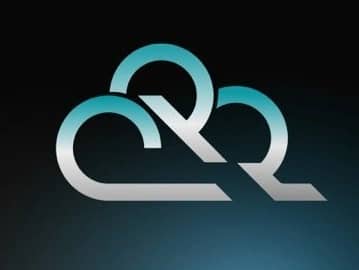ORIZON
ORIZON is a protocol that aims to integrate artificial intelligence with decentralized finance (DeFi), a model it refers to as DeFAI. The project is designed to operate as an AI-powered financial reserve system that generates revenue from various AI services and distributes it as yield to holders of its native token, ORI. [1]
Overview
ORIZON was established in July 2025 with the objective of addressing the economic centralization prevalent in the artificial intelligence industry, where profits are often concentrated within a small number of large corporations. The protocol's core mission is to create a direct, on-chain link between the utility of real-world AI products and decentralized yield distribution. It proposes an economic framework where revenue generated from a suite of proprietary AI services is systematically channeled into a transparent, on-chain treasury. This treasury serves a dual purpose: it backs the intrinsic value of the protocol's native token, $ORI, and provides the capital for "real yield" distributions to token holders who stake their assets.
The system is engineered to provide a passive income stream derived from tangible AI productivity, distinguishing itself from many DeFi protocols that rely on inflationary token emissions to reward participants. The project's stated goal is to construct an open and accessible economic system powered by AI, available for use by developers, communities, and individuals. The native token, $ORI, is described by the project as a next-generation algorithmic non-stablecoin, which suggests its value is managed by protocol-driven mechanisms rather than being pegged to an external asset like a fiat currency. [2] [1]
Features
Real Yield Generation
A central feature of ORIZON is its focus on real yield. Unlike yield derived from inflationary token rewards, the income distributed to stakers in the ORIZON ecosystem is designed to originate from external revenue generated by its AI products. When customers pay to use the platform's chatbots, image generators, or APIs, that revenue is collected by the protocol. These funds are then distributed to ORI token holders who have staked their tokens, creating a yield mechanism based on the business performance of the AI services rather than on the creation of new tokens. [1] [9]
Ecosystem
The ORIZON ecosystem is structured as a self-reinforcing economic cycle, which the project terms the "DeFAI Flywheel." This model is built upon the continuous interaction between three core layers: the AI Product Layer, the Treasury Vault, and the DeFi Protocol Layer. The flywheel is designed so that activity in one layer positively influences the others, creating a cycle of growth and value accrual for the entire protocol. [1] [8]
AI Product Layer
The AI Product Layer functions as the primary revenue engine of the ecosystem. It consists of the user-facing commercial AI services, such as chatbots and image generation tools, that are offered to the public. Revenue generated from these products provides the external capital that powers the protocol's economic model. The success and adoption of these AI services directly correlate with the amount of value flowing into the ecosystem's treasury. [5]
Treasury Vault
The Treasury Vault acts as the on-chain value gateway for the protocol. It is a system of smart contracts that collects, secures, and manages the revenue generated by the AI Product Layer. This on-chain treasury serves as the financial backbone of the ecosystem, holding the assets that back the ORI token and fund the yield distributions. Its transparent nature is intended to build trust and provide verifiable proof of the protocol's financial health. [6]
DeFi Protocol Layer
The DeFi Protocol Layer is responsible for managing the financial mechanics of the ecosystem and the utility of the ORI token. This layer includes the smart contracts for staking, yield distribution, and other financial activities. By allowing users to stake ORI and earn a share of the treasury's revenue, this layer creates demand and utility for the token. This utility, in turn, is meant to encourage further participation and investment in the ecosystem, which supports the growth of the AI Product Layer and completes the flywheel effect. [7]
Use Cases
- AI Service Consumers: Individuals and businesses can utilize ORIZON's suite of AI products, such as its chatbots for customer support or its image generators for creative projects.
- Developers: The platform intends to offer developer APIs, which would allow external builders to integrate ORIZON's AI capabilities into their own applications, websites, and services.
- Token Holders: Investors and community members can acquire and stake ORI tokens to receive a proportional share of the protocol's revenue, providing a mechanism for earning passive income.
- Protocol Participants: Users can engage with the DeFi layer through staking and, according to the project's roadmap, future governance mechanisms that will allow them to help guide the protocol's development and treasury management. [1]
Tokenomics
The native utility and governance token of the ORIZON ecosystem is $ORI. The token is central to the protocol's economic model, serving as the primary vehicle for value distribution and, in the future, decentralized governance. [1]
Token Utilities
- Staking: ORI tokens can be staked within the protocol, which entitles the staker to earn a share of the real yield generated from the platform's AI services.
- Governance: The project's development roadmap indicates that ORI will eventually be used for governance, allowing token holders to participate in key decisions regarding the protocol's future and the management of its treasury. [1]
Governance
The ORIZON protocol plans to transition to a decentralized governance model over time. According to its development roadmap, governance features are slated for implementation in 2027. Once implemented, this system is expected to empower ORI token holders to propose and vote on critical protocol parameters, treasury management strategies, and other key decisions affecting the ecosystem's development. This transition is aimed at placing control of the protocol into the hands of its community of users and stakeholders. [1]
